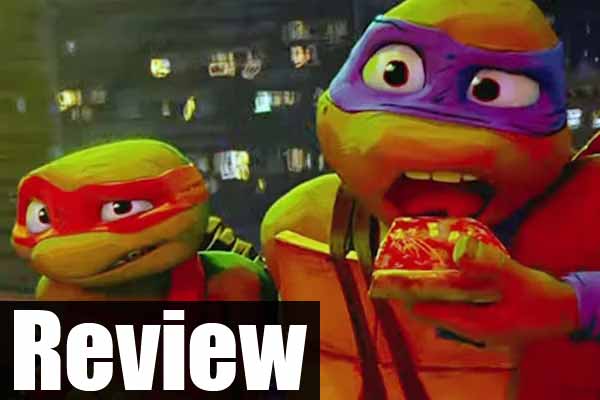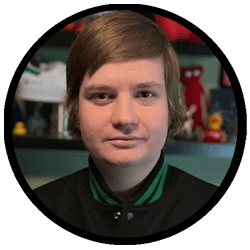Star Wars: The Rise of Skywalker Special Effects Interview
Interview with Neal Scanlan, SFX Supervisor on Star Wars: The Rise of Skywalker Special Effects
We would like to note that Star Wars: The Rise of Skywalker is available digitally now, and available in stores on March 31, 2020. For phone based interviews we try to present the conversation replies as close to verbatim as possible.
A staple I do in all interviews in order to start things off is to ask that you tell us a bit about yourself and the connection you have to Star Wars: The Rise of Skywalker?
Neal: My name is Neal Scanlan, I began my career in stop motion. I was a huge fan of Ray Harryhausen, I grew up with his work. I became completely taken by the work that Alan did on the original Star Wars, that became a huge inspiration to me. My career path led me from stop motion to animatronics.
That was the emerging technology and then eventually as we go through the whole technological curve it brings us to the digital era. At that point we start to transition between fully practical elements to CG and then a combination of those.
This drew me, or well to be approached by Kathleen and JJ when they came to start to look at the Star Wars films. Because practical effects have always been a really important ingredient to the world that I think George setup. I was fortunate enough to be at the right place at the right time to receive that phone call.

I understand you were the SFX Supervisor for the film, for those unfamiliar with the role could you tell us a bit about what the job entails and an element of that role you particularly enjoy performing?
Neal: My role really is to work in the very early stages of pre-production along with the director and the production based team to really get to understand what the desire is. My job is to try and get into the director’s head. Understand what the director is trying to articulate if he, or she can’t, if they can’t completely articulate the idea they might have. For me to try and understand that and almost get under their skin a little bit.
It’s been my responsibility in a sense to put a team of people together and to guide those people in helping them realize the director’s ambitions. Right from the beginning of concept when we’re trying to visualise this character, or creature or droid. In how we execute them, what they look like and how we’re going to operate them. Eventually right the way through to their performance and onto the set, taking them onto the set to shoot them for real. My job is one I consider to be phenomenally lucky in that I get to work right the way through the creative process.
My amazing team of people that come from all walks of life. To me , that is essentially the job I do. In its whole is what I particularly like, not one element I prefer to any other. It’s the total journey, I liken myself to almost be like a bus driver. I have this bus full of incredibly brilliant people and I just got to make sure we follow the right map and we don’t take a wrong turn. What a wonderful job.

With your role, I understand it’s more about practical effects. Was there a particular scene and or setup within The Rise of Skywalker that might surprise those viewing it to know that it’s a real physical entity?
Neal: Probably not one that hasn’t hopefully been seen by the fans in some way, shape or form. There’s a lot of characters that make their way in the background. For instance, there’s a droid in the Aki-Aki village where they run to the speeders. Rey, Poe and Finn run to the speeders. There’s this enormous droid right next to the speeders. It sort of has a suction cone to the front of it.
It might be a surprise to people that we built that for real. That very high section was added digitally. The legs right up to the base which is nearly 20 feet to about 20-30 feet long by about fifteen feet wide. All of that was built as a practical puppet that we took to Jordan and we shot in the actual location. It’s some of those things that people will go, that was CG.
Two little characters that have little ears, and their eyes are in their ears. It’s a little throwaway; typical Star Wars scene where the Millennium Falcon does a fly through the valley. Through the actual location and they pick up their ears and watch the Falcon go through.
Again, they were actually little animatronic puppets that we took, dug them into the sand on the edge of a rock face and performed that little moment and shot it live. I think its things that hopefully may be a little surprise when people would automatically think that’s just CG. Hopefully we go the extra mile to make sure we get them in the real light.

Do you ever find it challenging to bridge elements of physical creations with those that are digital effects added in after? I mean, I imagine there’s a lot to visualizing how the practical will look when it is eventually merged with digital elements.
Neal: One of the great things that we have is a working relationship that comes from George and ILM (Industrial Light & Magic). Right from the very beginning, the relationship of what we’re trying to do practically and how we would integrate that. How we would work alongside the digital side was always incredibly close. The visual effect supervisor such as Richard Guyer would be there all the time and we would have these discussions.
I think it’s one of the things that made ILM one of the great special effects houses in the world and why it sits so historically where it does. Even in the original Star Wars films it was that unique blend of what one might consider old effects techniques married in with these new techniques like motion control cameras. It was the use of traditional techniques mixed with the very latest techniques that I think gave Star Wars its incredible visuals. So what we try to do on the films now is to try and hold onto that as one of the heartbeats that fans love about Star Wars.
To try and do things; not always practical, but trying to achieve a certain amount practical. Then, look at how we can enhance that further using digital effects, or be assisted by digital. Things such as puppeteer removal. Often when you see a digital character we will have already constructed that as a real world mache or a photo realistic mache as we call it. Then the digital people can use that as their reference point and hopefully that helps keep the integrations so close so you don’t’ really know when you are or aren’t watching a particular transition from practical to digital.
Star Wars is a massive deal to so many, what’s it feel like to be part of the creative force behind making these stories come to life on the big screen?
Neal: I think if I look at my career and I look at career highs I have. Personal moments, personals films I have a particular kind of affection for. They are dotted throughout your career. They may be small; they may be large, maybe a commercial or maybe a feature film. To have found this late in life, for me, towards the tail end of my career to some extent one might say to be part of the Star Wars reboot or re-launch or the continuation of the Star Wars world. I couldn’t have asked for more.
I mean, it’s just an absolute gift. It has reinvigorated not only my career, but I think my crew’s career. Our ambitions and aspirations for what we want to do. In a way that I’m not sure many other film projects could have done. I’m incredibly lucky and incredibly proud to be where we are now. I think I’m blessed, absolutely blessed.

I see that filmography wise you’ve worked on a number of entries within the Star Wars franchise, is this a series you’d like to continue working on in the future in what I imagine are eventual spin-offs? On top of that is there anything strange or different you’d like to help get added in those hypothetical movies?
Neal: I absolutely would wish to continue. I think that the Star Wars world is a world in which you are already invited to in a sense. Due to what George setup. I find that the films are exciting places to be, to explore your ambitions or new ideas or new technologies. I think that when we look at something like Maz who was practical in The Rise of Skywalker. You begin to sort of look at areas where we can now push the practical effects and take them to maybe a place audiences haven’t seen before.
That marriage, which is still in its infancy as far as I’m concerned. In my opinion that’s the next infancy which is that match between the digital medium and the practical medium which seems to have almost endless possibilities. I love being a part of Star Wars, I feel we’re a family and I feel that continuity of creativity is something that’s very difficult to find in any other film. Most films come together for a very short period of time and you know great creativity takes place and then it disbands and it disperses.
Whereas within the Star Wars world one can have some form of long term projection of what one might want to do. So I’m more than happy, look forward to being hopefully involved in more Star Wars films. At the same there may be other projects that come along that also have a sort of desire to do a similar thing. They would be interesting too. I find that to just be an exciting possibility in what’s such a technological age we live in.

Looking at The Mandalorian, have you seen it and if so was there anything in there that you found particularly interesting from your profession’s point of view?
Neal: Cmon, Legacy Effects which we’re close to. Many of them I grew up with, we have a lovely relationship. That can’t help us be but competitive. By nature, I think Mandalorian is a stunning show. I think it’s been incredible. It feels so Star Wars and it has done so well.
The fact Baby Yoda is practical puppet I have got my arms around that too. I had heard that Babu Frik was slightly ahead in the popularity polls so for the minute I’m going to take that as being right. As much as I send my compliments to Legacy Effects, I still Babu Frik is better. (laughs with fun tone)
Lastly I would like to leave a spot for you to say something or go over anything I might have missed during the interview?
Neal: Not really, tremendous interview thank you so much. Incredible with your questions and thank you for giving me the time. Very interesting times at the moment, I take a look at the work that’s been done. The visual effects bake off this year, it’s a very interesting time that we’re moving into.
I think that we’re beginning to be where we’re on the cusp of a period where visual effects become wholesome in the process of film making. I wonder if the category of visual effects will stay as a category in its own right. It’s almost when you start to look at these films today that visual effects are so much part of the filmmaking.
One wonders if they won’t just become Best Picture, it’s incredible. See The Irishman or The Lion King, on the cusp of phenomenal work that’s around the corner. That exciting almost independent film making process. Certainly a process that George Lucas mentioned way back, one of his visions for the future. I think we’re not too far away from that. Very exciting times.
View our Interviews Hub
View our Movie Hubs
Read our Star Wars: The Rise of Skywalker Review

 Xbox
Xbox Playstation
Playstation Nintendo
Nintendo PC
PC Mobile
Mobile












